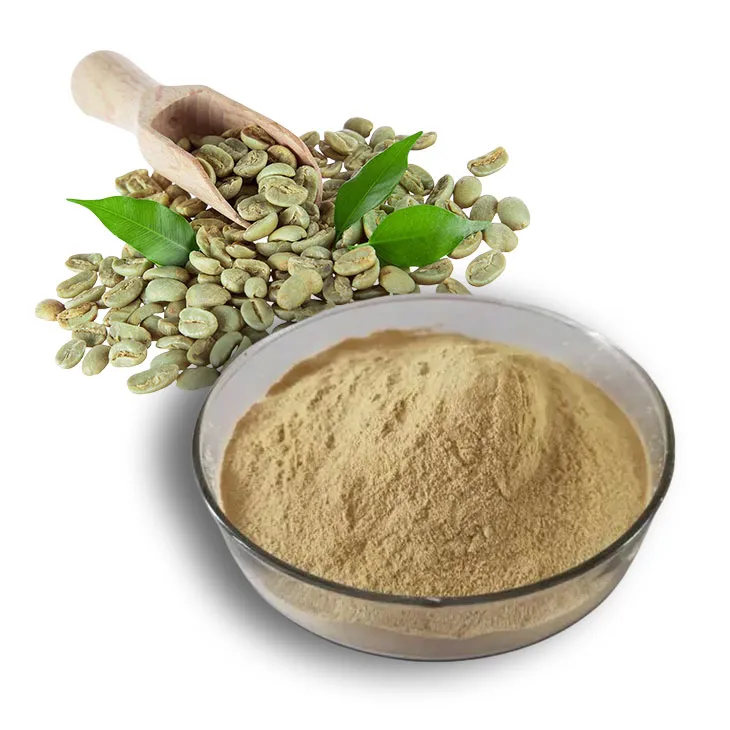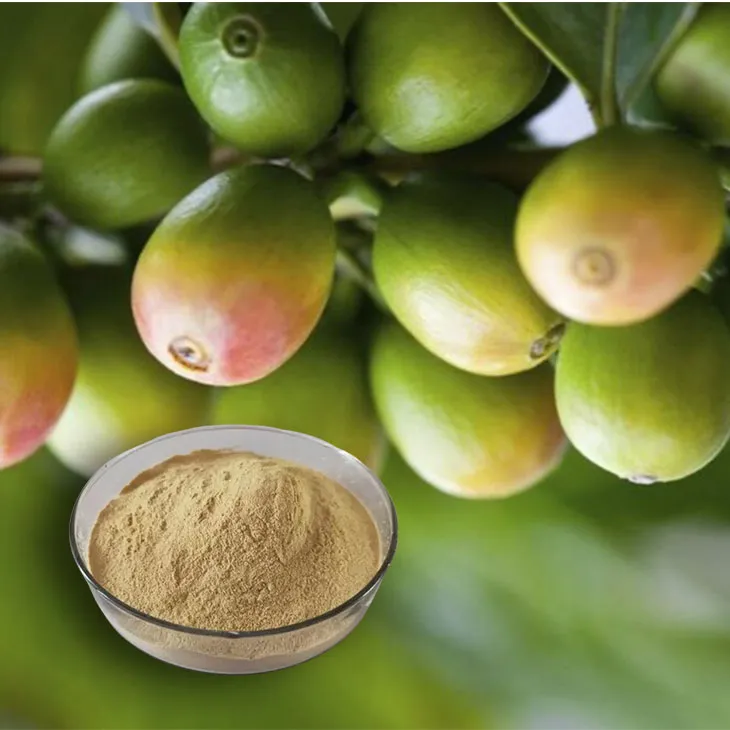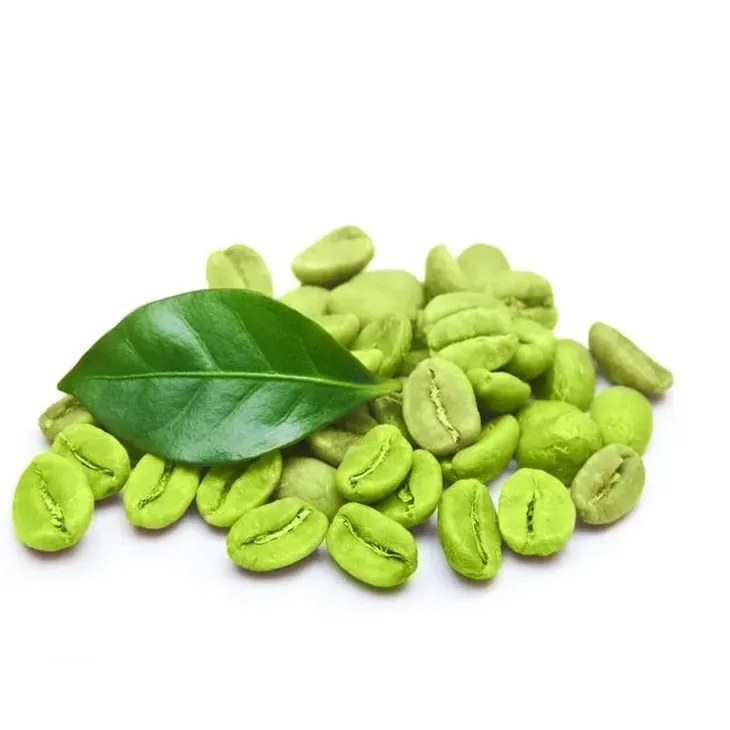- 0086-571-85302990
- sales@greenskybio.com
The process of extracting chlorogenic acid from green coffee bean extract.
2024-11-26

1. Introduction
Chlorogenic acid is a bioactive compound with numerous potential health benefits. It has been of great interest in various fields such as nutraceuticals and functional foods. Green coffee bean Extract is a rich source of chlorogenic acid. The extraction process of chlorogenic acid from Green coffee bean Extract is a complex yet systematic procedure that involves several steps to obtain a pure form of this valuable compound.

2. Preparation of Green Coffee Beans
2.1 Removal of Foreign Matter
The first step in the process is to ensure that the green coffee beans are free from any foreign matter. This may include things like dirt, stones, and damaged beans. By carefully removing these impurities, we can ensure that the subsequent steps are carried out on a pure sample of green coffee beans. This step is crucial as any foreign matter can interfere with the extraction process or contaminate the final product.
2.2 Grinding into Powder
Once the green coffee beans are clean, the next step is to grind them into a powder form. Grinding the beans helps to increase the surface area available for extraction. A finer powder will expose more of the bean's internal components, including the chlorogenic acid, to the extraction solvent. This is an important factor in achieving a high - yield extraction. Different types of grinders can be used, but it is important to ensure that the powder is of a consistent size to ensure uniform extraction.

3. Selection of Solvents for Extraction
The choice of solvent is a critical aspect of the chlorogenic acid extraction process. Different solvents can be considered based on their solubility properties and selectivity towards chlorogenic acid.
3.1 Ethanol - Based Solvents
Ethanol - based solvents are very popular in the extraction of chlorogenic acid from Green coffee bean Extract. Ethanol has the ability to dissolve chlorogenic acid effectively. It also has the advantage of being relatively safe and easy to handle. In addition, ethanol - based solvents are often more acceptable in the food and nutraceutical industries compared to some other solvents. The solubility of chlorogenic acid in ethanol can be optimized by adjusting factors such as the concentration of ethanol and the extraction temperature.
3.2 Other Solvents
While ethanol - based solvents are commonly used, other solvents have also been explored. For example, water can be used as a solvent, especially in combination with other substances to improve its solubility characteristics. However, water - based extractions may also extract other water - soluble components along with chlorogenic acid, which may require additional purification steps. Organic solvents such as methanol and ethyl acetate have also been studied for their ability to extract chlorogenic acid, but they may have limitations in terms of safety and regulatory acceptance in certain applications.

4. The Extraction Process
Once the solvent is selected, the actual extraction process can begin.
4.1 Maceration
Maceration is a common extraction method. In this process, the ground green coffee bean powder is mixed with the selected solvent (e.g., ethanol - based solvent) and allowed to soak for a certain period of time. This allows the solvent to penetrate the powder and dissolve the chlorogenic acid. The duration of maceration can vary depending on factors such as the type of solvent, the fineness of the powder, and the desired extraction yield. Typically, the mixture is stirred occasionally during the maceration process to ensure good contact between the powder and the solvent.
4.2 Soxhlet Extraction
Another method that can be used is Soxhlet extraction. This is a more continuous extraction method. In a Soxhlet extractor, the ground green coffee bean powder is placed in a thimble, and the solvent is continuously circulated through the powder. The solvent vaporizes in the distillation flask, rises up, condenses in the condenser, and then drips back onto the powder in the thimble. This process is repeated multiple times, allowing for a more complete extraction of chlorogenic acid compared to simple maceration. Soxhlet extraction is often preferred when a high - yield extraction is desired, but it may also require more time and solvent compared to other methods.
5. Separation of the Extract from Unextracted Material
After the extraction process, the next step is to separate the extract, which contains the dissolved chlorogenic acid, from the unextracted material.
5.1 Filtration
Filtration is the most common method used for this separation. The extraction mixture is passed through a filter, which can be a filter paper, a sintered glass filter, or a membrane filter. The solid particles of the unextracted material are retained on the filter, while the filtrate, which contains the chlorogenic acid - rich extract, passes through. Filtration can be carried out under normal pressure or with the assistance of a vacuum to speed up the process. The choice of filter depends on the nature of the unextracted material and the desired clarity of the filtrate.
6. Concentration of the Filtrate
Once the extract has been separated from the unextracted material, the filtrate often needs to be concentrated.
6.1 Solvent Evaporation
The most common way to concentrate the filtrate is by reducing the solvent volume through evaporation. This can be achieved by heating the filtrate under controlled conditions. However, care must be taken not to overheat the filtrate as this may cause degradation of the chlorogenic acid. Low - pressure evaporation or rotary evaporation can be used to reduce the solvent volume more efficiently while minimizing the risk of degradation. As the solvent evaporates, the concentration of chlorogenic acid in the remaining liquid increases.
7. Purification of Chlorogenic Acid
Purification is the final and crucial step in obtaining a pure form of chlorogenic acid.
7.1 Column Chromatography
Column chromatography is a widely used method for purifying chlorogenic acid from the extract. In column chromatography, a column is filled with a stationary phase, such as silica gel or a resin. The concentrated extract is then loaded onto the top of the column, and a mobile phase (usually a solvent or a solvent mixture) is passed through the column. Different components in the extract will have different affinities for the stationary and mobile phases, causing them to move through the column at different rates. Chlorogenic acid can be selectively eluted from the column, separated from other components in the extract, and collected in a purified form. This purified chlorogenic acid can then be used in various applications such as nutraceuticals and functional foods.
7.2 Other Purification Methods
Besides column chromatography, other purification methods have also been explored. For example, crystallization can be used to purify chlorogenic acid. By carefully controlling the conditions such as temperature and solvent composition, chlorogenic acid can be made to crystallize out of the solution, leaving behind impurities. However, crystallization may not be as effective in separating closely related compounds. Preparative HPLC (High - Performance Liquid Chromatography) is another method that can be used for high - purity purification of chlorogenic acid, but it is often more expensive and requires more specialized equipment compared to column chromatography.
8. Conclusion
The extraction of chlorogenic acid from green coffee bean extract is a multi - step process that involves careful preparation of the green coffee beans, selection of an appropriate solvent, extraction, separation, concentration, and purification. Each step is crucial in obtaining a high - quality, pure form of chlorogenic acid. With the increasing demand for natural bioactive compounds in various industries, the efficient extraction and purification of chlorogenic acid from green coffee bean extract will continue to be an important area of research and development.
FAQ:
What are the first steps in extracting chlorogenic acid from green coffee bean extract?
The first steps involve preparing the green coffee beans by removing any foreign matter and then grinding them into a powder form.
Why are ethanol - based solvents popular for the extraction?
Ethanol - based solvents are popular because they have the ability to dissolve chlorogenic acid effectively.
How is the extract separated from the unextracted material?
The extract is separated from the unextracted material through filtration.
How can the filtrate be concentrated?
The filtrate can be concentrated by reducing the solvent volume.
What is the final step in the extraction process of chlorogenic acid from green coffee bean extract?
The final step is purification. Methods like column chromatography are used to separate chlorogenic acid from other components in the extract, resulting in a pure form of chlorogenic acid.
Related literature
- Optimization of Chlorogenic Acid Extraction from Green Coffee Beans"
- "Chlorogenic Acid: Extraction from Green Coffee and Its Applications"
- ▶ Hesperidin
- ▶ Citrus Bioflavonoids
- ▶ Plant Extract
- ▶ lycopene
- ▶ Diosmin
- ▶ Grape seed extract
- ▶ Sea buckthorn Juice Powder
- ▶ Fruit Juice Powder
- ▶ Hops Extract
- ▶ Artichoke Extract
- ▶ Mushroom extract
- ▶ Astaxanthin
- ▶ Green Tea Extract
- ▶ Curcumin
- ▶ Horse Chestnut Extract
- ▶ Other Product
- ▶ Boswellia Serrata Extract
- ▶ Resveratrol
- ▶ Marigold Extract
- ▶ Grape Leaf Extract
- ▶ New Product
- ▶ Aminolevulinic acid
- ▶ Cranberry Extract
- ▶ Red Yeast Rice
- ▶ Red Wine Extract
-
Nettle leaf extract
2024-11-26
-
Eyebright Extract
2024-11-26
-
Centella Asiatica Extract
2024-11-26
-
Angelica sinensis extract
2024-11-26
-
Saw Palmetto Extract
2024-11-26
-
Cassia Seed Extract
2024-11-26
-
Curcumin Extract
2024-11-26
-
Shikonin
2024-11-26
-
Yohimbine Bark Extract
2024-11-26
-
Dandelion Leaf Extract
2024-11-26





















